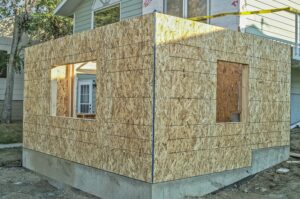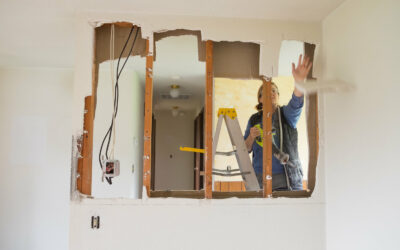
Creating the perfect home is a dream many aspire to. For some, it means finding a property that already meets every need and desire. For others, it involves taking an existing structure and transforming it into something extraordinary. Home additions offer a way to expand living space, enhance functionality, and increase property value while allowing homeowners to stay in the neighborhoods they love.
This article explores the art of expanding your home through thoughtful, well-planned additions, turning your current house into your dream home.
Understanding the Need for Expansion
Before diving into the specifics of home additions, it’s crucial to understand why homeowners choose to expand their living spaces. The motivations can vary widely:
Growing Families
As families grow, so does the need for additional space. Whether it’s more bedrooms, bathrooms, or communal areas, home additions can provide the necessary square footage to accommodate everyone comfortably.
Home Offices
The rise of remote work has made home offices a staple for many households. Creating a dedicated workspace through an addition can improve productivity and work-life balance.
Aging in Place
Many homeowners wish to stay in their homes as they age. Additions such as ground-floor master suites or accessible bathrooms can make a house more suitable for aging in place.
Increased Property Value
Well-executed additions can significantly boost a home’s market value. Whether it’s adding a modern kitchen, a luxurious master suite, or a functional family room, the right addition can attract potential buyers and command a higher price.
Personal Enjoyment
Sometimes, the motivation for a home addition is simply to enhance the enjoyment of the property. This could be anything from a sunroom to a home theater, providing spaces that cater to the homeowner’s interests and lifestyle.
Planning Your Home Addition
Successful home additions require careful planning and consideration. Here are some essential steps to guide you through the process:
Assessing Your Needs
Start by identifying the primary reason for your addition. Are you looking to increase living space, add functionality, or boost your home’s value? Understanding your goals will help shape the project.
Budgeting
Establish a realistic budget for your addition. Consider not only construction costs but also design fees, permits, and any unforeseen expenses. It’s wise to include a contingency fund for unexpected costs.
Designing the Addition
Work with an architect or designer to create a plan that integrates seamlessly with your existing home. The addition should complement the current structure, both aesthetically and functionally. Pay attention to details like rooflines, exterior materials, and window styles to ensure a cohesive look.
Obtaining Permits
Most home additions require permits from local building authorities. Ensure you comply with zoning laws, building codes, and any neighborhood restrictions. Failing to obtain the necessary permits can result in fines and delays.
Hiring a Contractor
Choose a reputable contractor with experience in home additions. Check references, review past projects, and ensure they are licensed and insured. A good contractor will manage the construction process, coordinate with subcontractors, and keep the project on schedule.
Types of Home Additions
There are several types of home additions, each serving different purposes and offering unique benefits. Here are some popular options:
Bump-Outs
Bump-outs are small extensions that expand a room without adding an entirely new space. They are ideal for enlarging kitchens, bathrooms, or bedrooms. Bump-outs typically don’t require significant structural changes, making them a cost-effective option.
Room Additions
Room additions involve adding a completely new room to your home. This could be a bedroom, bathroom, home office, or family room. Room additions offer substantial extra space and can be customized to suit specific needs.
Second-Story Additions
If you’re limited by lot size, a second-story addition can double your living space without expanding your home’s footprint. This type of addition is more complex and requires reinforcing the existing foundation, but it can dramatically transform your home.
Sunrooms and Conservatories
Sunrooms and conservatories provide a bright, airy space to enjoy natural light and outdoor views year-round. These additions can serve as relaxation areas, dining rooms, or even indoor gardens.
Garage Conversions
Converting an existing garage into a livable space is a cost-effective way to add a room without changing your home’s exterior footprint. This space can be transformed into a guest suite, home gym, or rental unit.
Basement Remodels
If you have an unfinished basement, transforming it into a livable area can add significant square footage to your home. Basements can be converted into family rooms, home theaters, or even separate apartments.
Design Considerations
When designing your home addition, several key factors should be taken into account to ensure the final result meets your expectations and enhances your living experience:
Seamless Integration
The addition should blend seamlessly with the existing structure. This includes matching exterior finishes, rooflines, and window styles. A well-integrated addition looks like a natural part of the original home rather than an afterthought.
Functional Layout
Consider how the new space will be used and how it will flow with the rest of the house. Efficient layouts that connect well with existing rooms can enhance daily living and make the addition more functional.
Natural Light
Incorporate ample windows and skylights to maximize natural light. Bright, airy spaces are more inviting and can make even small additions feel larger.
Energy Efficiency
Opt for energy-efficient windows, insulation, and HVAC systems to minimize the addition’s impact on your utility bills. Sustainable building practices can also reduce your environmental footprint.
Aesthetic Consistency
Maintain consistency in design elements such as trim, flooring, and fixtures. This creates a harmonious look throughout the home, making the addition feel like an integral part of the overall design.
Future-Proofing
Think about how your needs might change in the future. Designing flexible spaces that can adapt to different uses over time can ensure your addition remains functional and relevant for years to come.
Financing Your Home Addition
Financing a home addition can be a significant investment. Here are some common options to consider:
Home Equity Loans
Home equity loans allow you to borrow against the equity you’ve built in your home. These loans typically have fixed interest rates and are paid back over a set term, making them a predictable financing option.
Home Equity Lines of Credit (HELOCs)
A HELOC is a revolving line of credit secured by your home’s equity. It offers more flexibility than a home equity loan, allowing you to borrow and repay funds as needed. However, interest rates can be variable.
Cash-Out Refinance
Refinancing your mortgage to access cash for your addition can be a viable option, especially if current mortgage rates are lower than your existing rate. This involves taking out a new mortgage for more than you owe and using the difference to fund your project.
Personal Loans
Unsecured personal loans can be used for home additions, though they typically come with higher interest rates than home equity loans or HELOCs. They can be a good option if you don’t have significant home equity.
Savings
Using savings to fund your addition is the most straightforward approach, avoiding the need for loans and interest payments. This method requires substantial upfront funds but can be financially beneficial in the long run.
Managing the Construction Process
Once your plans are in place and financing is secured, the construction phase begins. Effective management of this process is crucial to ensure a smooth and successful project:
Clear Communication
Maintain open lines of communication with your contractor and any subcontractors. Regular updates and meetings can help address issues promptly and keep the project on track.
Staying Organized
Keep detailed records of contracts, permits, invoices, and correspondence. Staying organized can help you manage the project efficiently and resolve any disputes that may arise.
Monitoring Progress
Visit the construction site regularly to monitor progress and ensure work is being done to your specifications. Don’t hesitate to ask questions or request changes if something isn’t meeting your expectations.
Handling Disruptions
Construction projects can be disruptive to daily life. Plan for potential inconveniences such as noise, dust, and limited access to certain areas of your home. Temporary arrangements, like setting up a makeshift kitchen or workspace, can help you manage during the construction period.
Quality Control
Inspect the work at key milestones to ensure it meets quality standards. Address any concerns immediately to avoid costly corrections later.
Final Inspections
Once construction is complete, conduct a thorough walkthrough with your contractor to identify any remaining issues or touch-ups needed. Ensure all work is completed to your satisfaction before making final payments.
Celebrating Your New Space
After months of planning and construction, your home addition is finally complete. Here are some steps to enjoy and make the most of your new space:
Personalizing the Space
Decorate and furnish the new area to reflect your style and preferences. Personal touches can make the space feel uniquely yours and enhance your enjoyment.
Hosting a Housewarming
Celebrate your new addition by hosting a housewarming party. Invite friends and family to see the transformation and share in your excitement.
Enjoying the Benefits
Take time to appreciate the benefits your addition brings to your daily life. Whether it’s the extra space, improved functionality, or enhanced aesthetics, enjoy the fruits of your investment.
Maintaining Your Addition
Regular maintenance is key to preserving the value and functionality of your new space. Keep up with routine tasks like cleaning, inspections, and minor repairs to ensure your addition remains in top condition.
Conclusion
Home additions offer a powerful way to transform your living space, enhance your lifestyle, and increase your property’s value. By carefully planning, designing, and managing your project, you can create an addition that seamlessly integrates with your existing home and meets your needs for years to come. The art of expansion lies in balancing practicality with creativity, ensuring your dream home becomes a reality through thoughtful, well-executed additions. Whether you’re accommodating a growing family, creating a personal oasis, or investing in your property’s future, a successful home addition can turn your current house into the home of your dreams.
Read Other Blog Posts to Better Understand Home Design and Construction Remodeling Advantages
Should You Repair or Replace Your Hard Wood Floors
Hardwood flooring is an attractive addition to a home and a flooring...
5 Quick Benefits of Hiring a Local Cabinet Installer
Looking to upgrade your cabinets? Upgrading your kitchen cabinets is a...
What is the Most Expensive Part of a Kitchen Remodel?
If you're planning a kitchen remodel, you're probably wondering what...
Should I Hire a Designer or Remodeling Contractor First for Home Project?
It can be challenging to know whether you should hire a designer or...
Pros And Cons Of Removing A load Bearing Wall at Home
Removing a load bearing wall in your home has to be done with...
7 Project Tips For Hiring the Best Remodeling Company
When undertaking a renovation project, you want to ensure that you...






